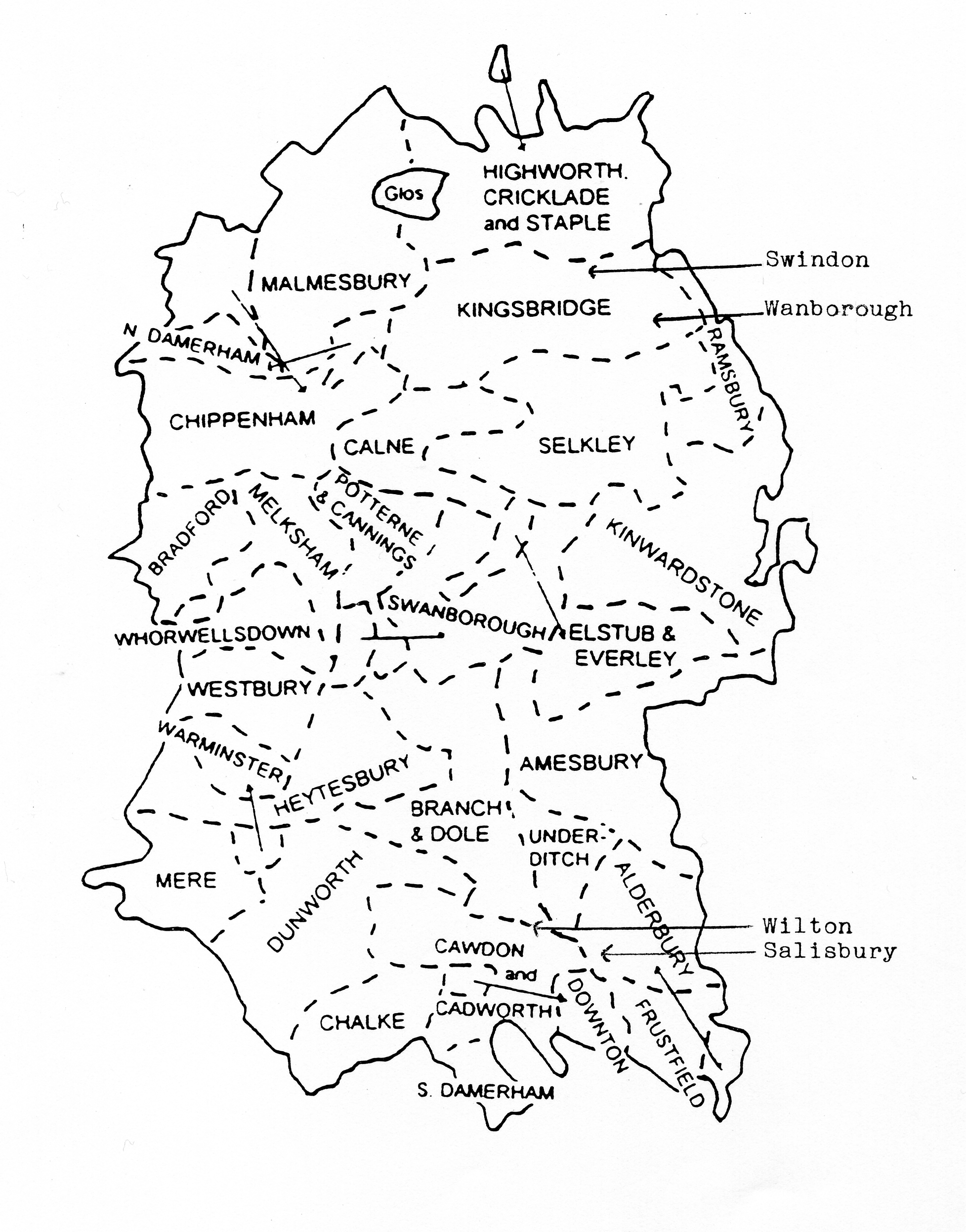Wiltshire hundreds

GLOSSARY
Alehouse. Victuallers and alehouse keepers have been licensed by JPs since 1552.
Bengal Artillery. A part of the Bengal Army of the East India Company.
Church Courts. Dealt with ecclesiastical and many other matters of 15th-19th century life, e.g. wills.
CCS. Colonial Civil Service.
Copyhold. Land held by title written into the Manorial Court rolls (records).
Demesne. The Lord's land.
Distrain. Seize goods of a debtor.
DNB. Dictionary of National Biography.
EIC. East India Company.
Enclosure Awards. A process for enclosing and re-allotting open fields, common meadows, commons, heaths, greens and forests.
Extents. A writ directing the sheriff to seize the property of a debtor.
Frankpledge. A mutual suretyship by which the members of a tithing were made responsible for one another.
Freeman of the Goldsmiths Company. Successfully completed apprenticeship, or gained by patrimony.
Goldsmith. Gold and silversmiths.
Heriot. A fine due to the lord of the manor on the death of a tenant, originally his best beast or chattel.
Hundred. A subdivision of a county having its own court.
Husbandman. A tenant farmer.
Indenture. A document used for contracts, title deeds etc. Two copies were made.
ICS. Indian Civil Service.
IGI. International Genealogical Index.
Innholder. Held lease of inn (for 500 years).
Inquisition. Examination, investigation, judicial inquiry.
Intestate. When a person died without leaving a will. If property was involved or there was money in an A/C then application for probate had to be made and letters of administration (admon) issued.
Inventories. List of belongings of a deceased person.
Manorial Records. Until the 18th century the manorial system provided a framework for the lives of much of the rural population. Manorial boundaries did not coincide with those of the parish and any one parish might include portions of several manors. The records consist of court rolls, surveys, maps, and other documents relating to the boundaries, wastes, tenancies, misdemeanours and customs of the manor. Up to 1732 they were often in latin. Many have been lost or destroyed.
Mark. Goldsmiths initials or other mark stamped on silverwear to show maker.
Mercer. A dealer in silk, cotton, woollen and linen goods.
Messuage. A house with outbuildings and yard and sometimes garden.
Measurements. See separate page in this section.
Musters. From the Anglo-Saxon period, able-bodied men between ages of 16 and 60 were liable to perform military service.
Peculiar. A group of parishes not necessarily adjacent or in the same county who were exempt jurisdiction of the arch deaconry and were subject to a dean or bishop.
PRO. Public Record Office.
£.s.d. Pounds, shillings, pence.
Quitclaim. A formal release of property.
Quit Rent. A fixed annual payment made by a manorial tenant to be released from services to the Lord of the Manor.
Subsidies. (Lay Subsidies). The main means of raising money up to 1660 (except during the Civil War). Distinction was made between taxation of goods (moveables) and land.
Tithes. A tenth part of the main produce of land and labour, e.g. wool, pigs, milk was paid to the local church.
Toft. A homestead or hillock.
Virgates. An old land measure commonly 30 acres. WRO. Wiltshire Record Office.
WRS (WAS) Wiltshire Record Society.
Yard of Land. Commonly 30 acres.
Yeoman. Man holding (not necessarily owning) and cultivating small landed estate.